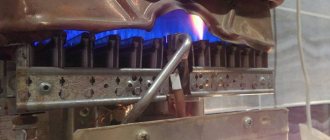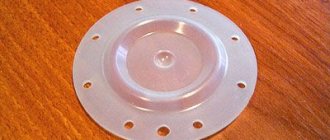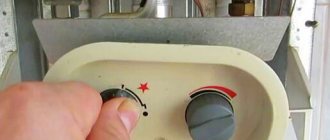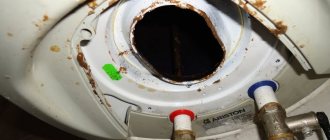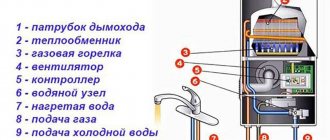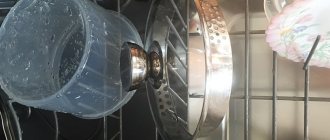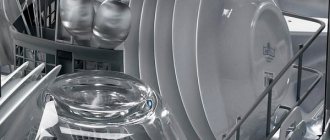A gas water heater is a popular household appliance. It is distinguished by its simplicity of design, reliability and ease of use. With proper care and timely replacement of consumables, such a unit can last a long time. However, like any mechanism, the water heater is subject to some breakdowns. Poor quality fuel, impurities in water, improper operation - all this leaves its mark, leading to malfunctions. If you notice that the geyser does not heat the water well or does not heat it at all, this is a clear indicator of serious problems inside the device.
The principle of operation of the speakers
Why doesn't the gas water heater heat the water? To answer this question, you need to understand the internal structure of the unit. The complexity of repair will depend on the design features of a particular model.
The operation of a gas water heater allows you to provide an apartment or small house with hot water. To directly heat the liquid, the device is equipped with a special part - a heat exchanger. In it, the water flow is distributed through thin channels that pass above the gas burner.
This method allows you to achieve rapid heating right during use, eliminating the need to collect liquid in an additional tank.
Other parts and sensors serve to control heating, protect the device, supply and ignite fuel. Based on the type of ignition system, water heaters are divided into three types.
- Piezo ignition is a system that allows you to do without an igniter.
- A device with an igniter - made in the form of a constantly burning wick. It is set on fire manually or using a toggle switch. Not the most practical device, widely used in previous generation speakers.
- Electric ignition system. It operates on the same principle as a car ignition.
The design of the device includes a water unit (“frog”), which includes a membrane and a gas valve connected by a rod. The gas supply valve can only open if there is good water pressure on the membrane. To put it simply, without a water flow it is impossible to supply fuel to the burner. Among other things, this system saves gas.
Gas water heater unit
For what reasons does fuel burn incompletely?
During the physicochemical process of combustion of saturated hydrocarbons and its subsequent products, carbon dioxide is formed. It happens that there is no fresh air supplied and during the combustion process, in addition to carbon dioxide products, carbon monoxide is formed in the form of pollution and soot. By the way, carbon monoxide exists in all gas burners; this is its usual state. This cannot be avoided. Sometimes, to keep the internal walls of the burners clean, combustion chambers are installed, where the combustion process takes place. In water heaters operating on ducts, such chambers are not used. In order to look at the gas combustion process, you can remove the front panel of the gas burner and look at the inside of the device.
Sometimes the panels are dirty and smeared with soot. To clean them, ensure the flow of air into the chamber and clean the device. For one cubic meter of gas to burn properly, it will require about ten parts of fresh air. In devices designed to generate gas, everything is provided in advance; with the help of a specially installed air valve, free access of fresh air into the chamber can be ensured.
Remember that you should not neglect cleaning the heat exchanger panels, because this could result in poor water heating and excessive fuel consumption.
Major breakdowns
Having understood the structure, you can consider the typical problems that arise in such devices.
Blockage in the chimney
One of the most common reasons why water does not heat up can be a blocked ventilation well. A chimney clogged with debris is not able to create sufficient draft for combustion, so the protection system built into the device cuts off the fuel supply.
By cleaning the chimney from soot and foreign objects, you will eliminate the problem. You can check the system's functionality using a lit candle. Bring it to the well and follow the flame. If it deviates significantly, it means the traction is in order.
Faulty ignition system
The second most popular problem with water heaters is discharged batteries. This problem only affects systems with automatic ignition. Despite loud claims from manufacturers that their batteries last up to a year, they should be changed more often. In addition to simple discharge, the element may oxidize or simply be defective. Make it a rule to periodically check its condition.
To fix the problem you need to:
- check the functionality of the ignition activation keys;
- change batteries.
This is the simplest procedure that you can do yourself.
Weak water pressure
Often a geyser does not heat water well due to false activation of the protective system. Due to the weak liquid pressure on the membrane, the system does not turn on the gas supply valve. It’s easy to identify the problem: open the faucet and watch the flow of water. If it is weak, then there is a problem somewhere in the plumbing.
To fix the problem you will need:
- contact the utility service and clarify the reason for the low pressure;
- clean the filter system from contaminants or replace it with a new one;
- leave an application for pipe cleaning at the utility service;
- thoroughly clean the gas water heater from soot and soot;
- check the performance of the membrane and replace it with a new one if necessary;
Broken water supply system
A fairly rare problem that occurs when the equipment is configured incorrectly. If a gas water heater lights up but goes out after some time, the balance in the cold and hot liquid supply system is most likely upset. Experts say the following about this: you should not mix cold and hot water when using the column. This causes the burner flame to go out and is also contrary to the rules for working with the device. The breakdown can be corrected by reducing the pressure of the cold water flow.
Worn seal diaphragm
The next cause of failure may be a worn-out membrane in the check valve. Over time, intensive work deforms the part under constant loads. This leads to a loss of sensitivity at the burner ignition sensor, the gas valve does not open, and the column goes out. There is no way to prevent the situation; even the most reliable membranes lose their elasticity over time. Experts recommend replacing parts every five to seven years.
Detecting wear is quite simple - turn on the maximum water pressure. If the burner goes out, it means the problem is with the old membrane.
Attenuation during operation
If a fire lights up in the gas water heater and then goes out during operation, then the bimetallic sensor has failed. Its main task is to measure temperature and protect the device from excessive heating. Such a breakdown can manifest itself in different ways.
- The column turns on and works for some time without incident, then the burner goes out for no reason and the work stops. Attempts to ignite it again do not bring results. After 10 minutes the device can function again, but soon the gas will stop flowing again. The explanation for this lies in the excessive sensitivity of the sensor.
- Shutdowns and ignitions are chaotic in nature, and it is impossible to predict periods of stable operation. This time the problem occurs due to damaged wires of the device. Broken conductor insulation causes short circuits on the housing and tripping of the fuse.
This damage cannot be fixed at home. You need to contact service or directly the manufacturer.
Bimetallic sensor
This problem is “seasonal” in nature. Summer stuffiness or enclosed spaces can cause the device to overheat, which is not a breakdown in itself. Try moving the device to a ventilated area or contact a qualified technician.
Scale
A common reason why the column heats the water poorly may be excessive accumulation of scale on the heating element. With this problem, gas is steadily supplied to the burner, water circulates through it, but under such conditions it will not heat up to the required temperature.
Scale is formed as a result of contact of the device with bad water or idle burning of the igniter . Working after the main system is turned off, the heat exchanger evaporates the remaining water, thereby increasing the scale layer. Unwashed by influxes of fresh water, it manages to settle on the walls and become firmly entrenched. Over time, the heating element will stop heating and the column will stop working. The problem can be resolved by washing the heat exchanger in a special solution.
To avoid active scale formation, experts recommend installing a water filter.
First aid
Before looking for a breakdown and calling a repairman, check that all conditions for normal operation of the column are met.
What to look for:
- If the water is not hot enough, check the temperature regulator and, if necessary, turn it to the desired value;
- If the device is working at maximum, the pressure is very good, but you need to make the water hotter, open the tap halfway;
- Check whether the gas tap is fully open, especially if you recently turned off the gas due to repairs or departure;
- If the dispenser operates on liquid gas, call a technician to inspect the cylinder and check its serviceability;
- Check to see if the cold water is turned on anywhere;
- Compare the temperature of the hose at the dispenser and the mixer. If it is different, the tap needs to be cleaned;
- Check if the filters are clogged.
If all of the above is working properly, but the water heating system still does not work well, you need to look for a breakdown in the device itself.
Descaling the system
The water in Russian pipes has never been of good quality, therefore, during the operation of gas equipment, various salts and metals accumulate on the internal sections of the heat exchanger. In this case, the diameter of the outlets gradually narrows, and the scale layer reduces the thermal output of the entire system.
It turns out that with an acceptable water pressure, the pipes do not heat up sufficiently, and we get a significant decrease in efficiency. But this problem can be dealt with on your own. To clean the radiator from scale, simply rinse it. Depending on the degree of contamination, citric acid is used, and in difficult cases, specialized detergents are used.
Dismantling the geyser heat exchanger
To fully clean the system, it is necessary to remove the radiator from the gas water heater. Washing some individual parts is less effective, but if it is impossible to dismantle the element in principle, then you have to be content with little.
Before dismantling, it is necessary to turn off the column and turn off the gas and water supply taps. You also need to drain all liquid from the system. We release the panel behind which the radiator is located by unscrewing the fasteners and remove it. Carefully remove the heat exchanger, trying not to tilt it, because there is probably water left there.
Cleaning the heat exchanger from scale
The cleaning procedure itself is extremely simple: pour citric acid or a specialized product into the radiator and leave it for a couple of hours in some warm place. During this time, the composition will react with the scale and discharge it. Next, we rinse the heat exchanger with running water and install it in place in the reverse order of disassembly. If necessary, repeat the cleaning procedure.
Reasons why the water assembly rod may jam
If the rod on the water unit is in a state of malfunction, then there is no need to panic in such cases - make sure that when using a hot water tap, the flame will not increase with renewed vigor. If fuel combustion occurs intermittently, inconsistently, then try to change the water temperature in case of poor heating.
The malfunction of the unit rod can be eliminated independently and without calling a team of workers. You will need basic tools before repairing: a wrench, screwdrivers with different bits and a Phillips slot.
Fixing a leak in a gas water heater
This problem is relevant both for new equipment and for old gas boilers that have been operating for several years. The column can leak for a number of different reasons, but the main ones are the following:
- incorrect connection of water hoses;
- absence or wear of gaskets at joints;
- A fistula has formed in the radiator tube.
There are no problems with the first two cases: we go through and reconnect the hoses, not forgetting to lay the seals.
Experts recommend using silicone gaskets, especially for gas equipment. They provide decent tightness and last much longer than ordinary rubber or tow.
As for the fistula, you can try to solder it, but this is only a temporary solution. If the material begins to deteriorate and crack in one place, it means that soon the entire radiator will be covered in such fistulas. Therefore, the only correct option is to completely replace the heat exchanger.
Sealed geyser
Ways to solve the problem
The problem can be solved in ways that require significant investment, for example:
- using an indirect heating boiler together with a boiler,
- purchasing a new boiler with a built-in boiler.
However, there is a less expensive, but very productive method - inserting an electric storage heater into the hot water supply circuit. Moreover, for this purpose, any standard heater with a volume of 30 liters is quite suitable, regardless of the manufacturer.
Use a water heater
A water heater embedded in the hot water supply circuit acts as a buffer tank. Its purpose is to equalize the temperature of hot water and smooth out possible temperature surges. The storage water heater and the gas boiler heater are set to the same operating temperature.
Even if the hot water taps are turned on simultaneously at different points of its intake, all users will initially receive water from the storage tank. The time spent waiting for a comfortable water temperature is reduced. Unproductive water consumption is reduced.
Turning the hot water supply on and off at any point of intake causes a temperature difference in the water leaving the gas boiler. However, this water enters the lower part of the water heater, and when it leaves the upper part, the temperature jump is completely smoothed out.
Connecting the water heater through a ball valve allows you to switch to a conventional gas boiler operating system at any time, which can ensure uninterrupted hot water supply in the event of a water heater failure.
Using a bypass jumper with a tap in close proximity to the boiler allows you to exclude the boiler from the hot water supply system. If the boiler is under maintenance, using the existing water heater will ensure uninterrupted operation of the hot water supply system.
Use an expansion tank
In winter, when the boiler's heating circuit is activated, any activation of hot water results in the heating circuit being turned off so that the hot water supply circuit can turn on. In the summer, when the boiler's heating circuit is not activated, each turn on of the hot water leads to the gas boiler turning on.
Often the user opens the hot water tap to simply rinse his hands. The boiler turns on or switches, hot water flows through the pipes. But the user may simply not wait for it, washing his hands with cold water.
Meanwhile, frequent and useless turning on and switching of the boiler “eats up” its operating life. A possible solution is to install a small expansion tank. It is installed in front of the water heater. If there is such a tank, for the first time after turning on the tap, hot water enters the pipe exclusively from the water heater due to the increase in pressure in the tank. Thus, in case of short-term use of hot water, there is no need to turn on and switch the boiler.
It is recommended to use a tank designed for hot water supply. Using a tank intended for heating will cause an odor because its membrane is made of rubber.
Use a recirculation pump
The best option is that the water heater is located in close proximity to the hot water intake points. The closer it is, the faster the hot water enters the tap, the more efficiently it is used. If this option for installing a water heater is not possible, then it is recommended to install a recirculation pump.
The pump is installed in the section between the water heater and the hot water intake points, ensuring the slow movement of hot water through the pipes. In addition, if you install a heated towel rail in this section, it will perform its direct function at any time of the year, regardless of the operation of the heating circuit of the boiler.
Weak water heating
If, after eliminating the leak and cleaning the radiator, the water in the column still does not heat up to the proper level, then you should pay attention to other indirect reasons:
- insufficient gas pressure;
- faulty mixer;
- filter elements.
If gas arrives at the inlet from a pipeline or cylinder with insufficient pressure, the water simply does not physically have time to heat up. The solution to this problem is best left to the shoulders of gas service specialists.
It is easy to determine whether a mixer is faulty. All you have to do is put your hand on the hot water hose that runs under the sink. If it is cold, then the problem is with the gas boiler, and if not, then we adjust the mixer or change it.
One of the most common reasons for warm water instead of hot water is clogged filters. It is worth checking everything that has a grate or any independent cleaning modules along the way from the gas boiler to the mixer, and, if necessary, remove obstacles by thoroughly washing the elements.
Here is a short list of reasons why a regular gas water heater does not heat water. Some of them are easy to fix on your own, while others require professional intervention. Remember to take precautions when working with gas equipment and follow all instructions from professional mechanics. Among other things, timely replacement of wear parts will help avoid most breakdowns.
Failure Prevention Measures
To reduce the likelihood of geyser malfunctions and safely enjoy hot water, it is necessary to carry out periodic maintenance. You can do the work yourself or use professional services.
Prevention involves disassembling and thoroughly cleaning the gas water heater. We have provided a detailed description of the manual service process in this material.
Periodic maintenance and cleaning of the chimney will extend the life of the gas water heater.
When carrying out maintenance work, do not forget about the chimney. When the channel for discharging combustion products becomes clogged with soot and foreign objects, the protection is triggered and the water heater is turned off.
Conclusions and useful video on the topic
You can learn how to repair the frog of a Chinese water heater from the following video:
About the repair of the Vaillant 24\2 GRXI gas water heater simply and clearly in this video:
The Bosch water assembly may seem very complicated. However, many parts cannot be replaced individually, so you will have to buy the assembly as a whole. It’s good that dismantling and assembling the unit is simple:
The video explains why you should not delay replacing the stem seals as soon as you notice the appearance of droplets. Shows how to disassemble the rod, replace the seals and reassemble:
In general, the device of any water block of a household geyser is quite reliably designed and executed. If the installation was carried out correctly, and preventive inspections with timely replacement of consumables are carried out regularly, then problems with the operation of the speakers do not occur often. To repair a water heater assembly, you do not always need a gas company specialist. Many types of work can be done independently.
